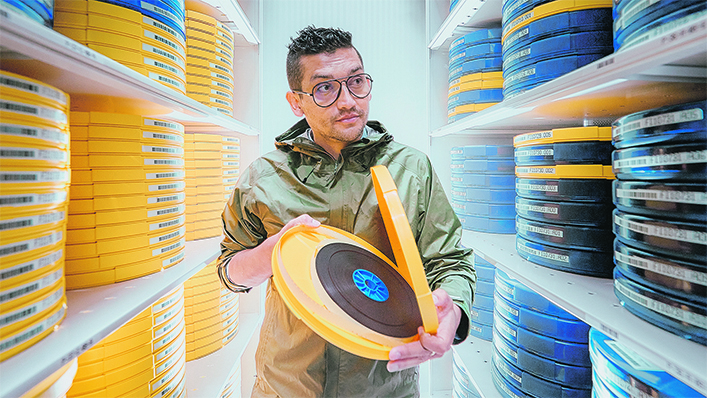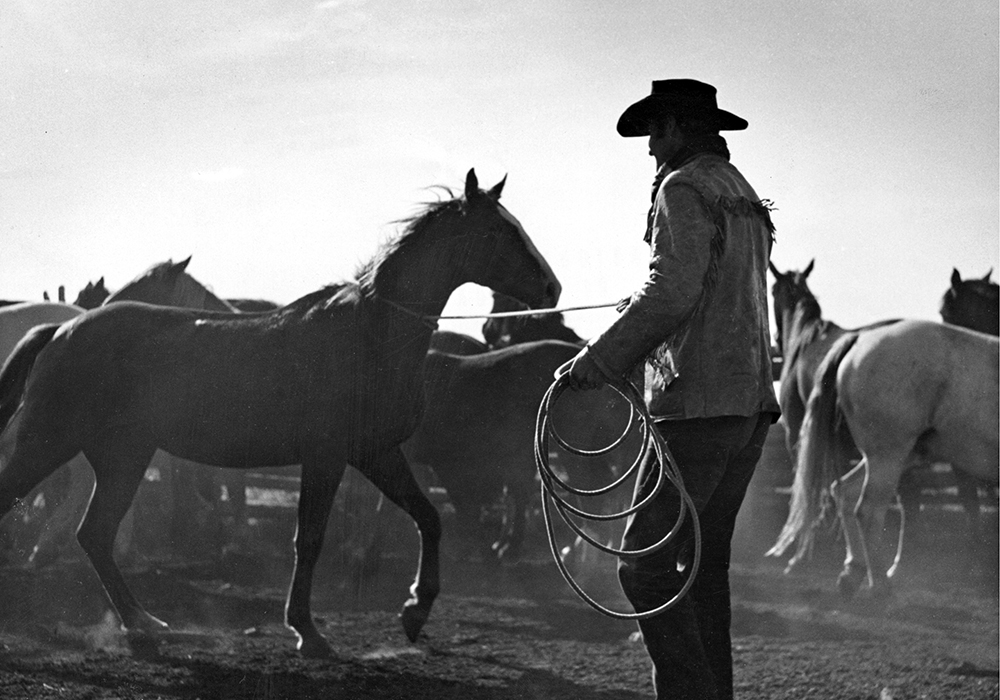A year-long collaboration between The Western Producer and the National Film Board of Canada celebrating the newspaper’s 100th anniversary was launched Aug. 24 with a pioneering film about an Alberta cowboy taming a wild horse.
Corral, which was released in 1954, won an award for best documentary at the Venice Film Festival. It was directed by Colin Low, who filmed it with cameraman Wolf Koenig at the Cochrane Ranch near Cardston, Alta.
It is the first in a series of films called Perspectives from the Prairies, which The Western Producer will profile each month until July 2024, said collection curator Camilo Martin-Florez, who selected them with help from publicist Katja De Bock. The films will be available for free streaming at the NFB’s website.
Corral is an 11-minute documentary that follows cowboy Wallace Jensen as he rounds up a herd of horses into a corral, lassoing and saddling one of the skittish animals to tame it so he can go for a “glorious plunging ride across the spectacular Rocky Mountain foothills of Alberta,” said a description by the NFB.
It was part of an early wave of heroic, non-fiction films by the NFB that were about real people, said Low’s son, Stephen, who is an award-winning director of IMAX films. It aimed to provide a peaceful counterpoint to the typical fictional Western films of that era that emphasized gunfights, conflict and violence, he said.
“And it’s meant to show the reality of what ranching is — not just showing and telling, but the romance and the poetry of it … You could use real people who were actually real heroes and tell their story.”
Unusual for the period in which it was made, it contained no narration or dialogue, said Dean Duncan, associate professor in the Department of Theatre and Media Arts at Brigham Young University in Utah. It instead consisted of a soundtrack of Spanish-style guitar music, with the movie shot in black and white on 35-millimetre film that was typically used for Hollywood feature-length fiction movies, not short documentaries, he said.
“It was a pioneering example of something documentaries do really well, and that is portray processes and things that are typical. They have their own inherent story, and this film is about an actual ranch hand… breaking a horse: he finally gathers it, he pacifies it, he gets a saddle on it, gets the horse used to the saddle, and tames it by the end of the movie.”
Colin Low, who passed away in 2016 at 89, is remembered as one of Canada’s most important filmmakers. His more than 50-year career at the NFB included work in large-format cinema that helped pave the way for IMAX 3D films, earning many honours that included nine Academy Award nominations.
He was born in Cardston in 1926 and his father, Gerald, was a foreman at the Cochrane Ranch where Jensen was a top hand. The property was separate from the ranch near Calgary that gave the town of Cochrane its name.
Although Jensen was the protagonist of Corral, he wasn’t an actor, said Duncan.
“He was a cowboy. This is what he does for an actual living, and again, it was Low’s point that hardly anyone roots or toots or shoots at all, but some guys have to take care of the cattle, and this is a good example of the actual work and how skillful and beautiful it is….

“It’s portraying a confident, skillful, and when it comes down to it, gentle and wise cowboy doing the kind of thing that people did on the land forever, and it made the land more ordered. It really is an emblem, a parable if you want, with the settling of the West, not through violence or confrontation but through accommodation, negotiation, diplomacy or kindness.”
The documentary also showcases the rugged beauty of southwestern Alberta near the foothills of the Rocky Mountains, along with Waterton Lakes National Park. The iconic Chief Mountain can also be seen just across the border in Montana.
“And I remember being just in love with the detail of the film, like the horse,” said Stephen Low. “You’ll see that beautiful photography of the horse arriving at the top of the hill and his hoofs kind of step on the rocks, and it’s just exquisitely filmed.”
Corral is one of more than 13,000 films made since the NFB’s formation in 1939, including hundreds of documentaries on agriculture and Western Canada, said Martin-Florez. The board’s collections also include a range of works from Canadian cinema dating back to 1895, offering a unique window on the country’s past, he said.
“That’s why I keep on saying that the NFB is kind of the family album of Canada… so, I guess the NFB at the end is preserving the history, the people and the culture of Canada, which is the greatest value of the NFB.”
To watch Corral, visit www.nfb.ca/channels/perspectives-from-the-prairies/.
This column is part of a year-long collaboration between The Western Producer and the National Film Board of Canada celebrating the newspaper’s 100th anniversary.


















